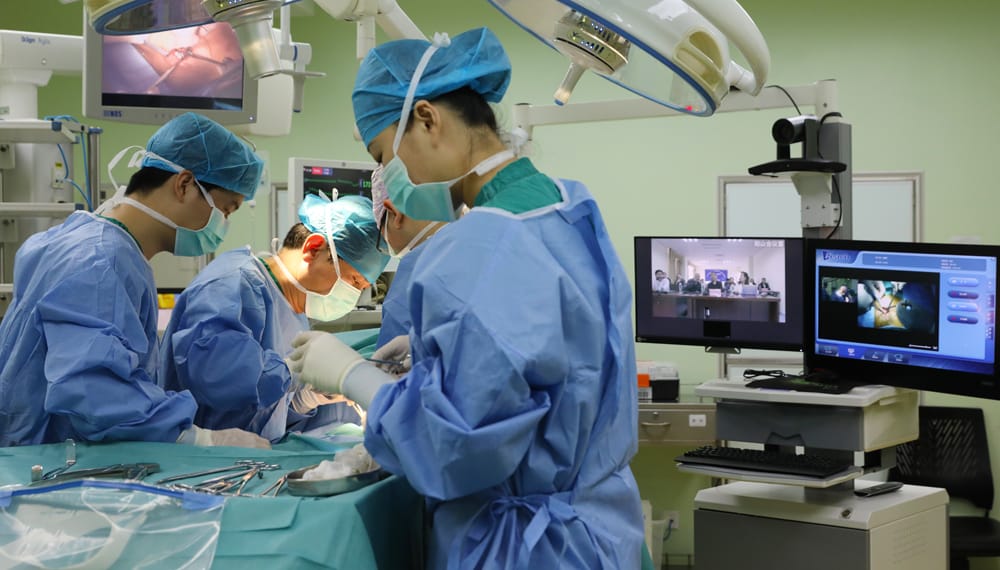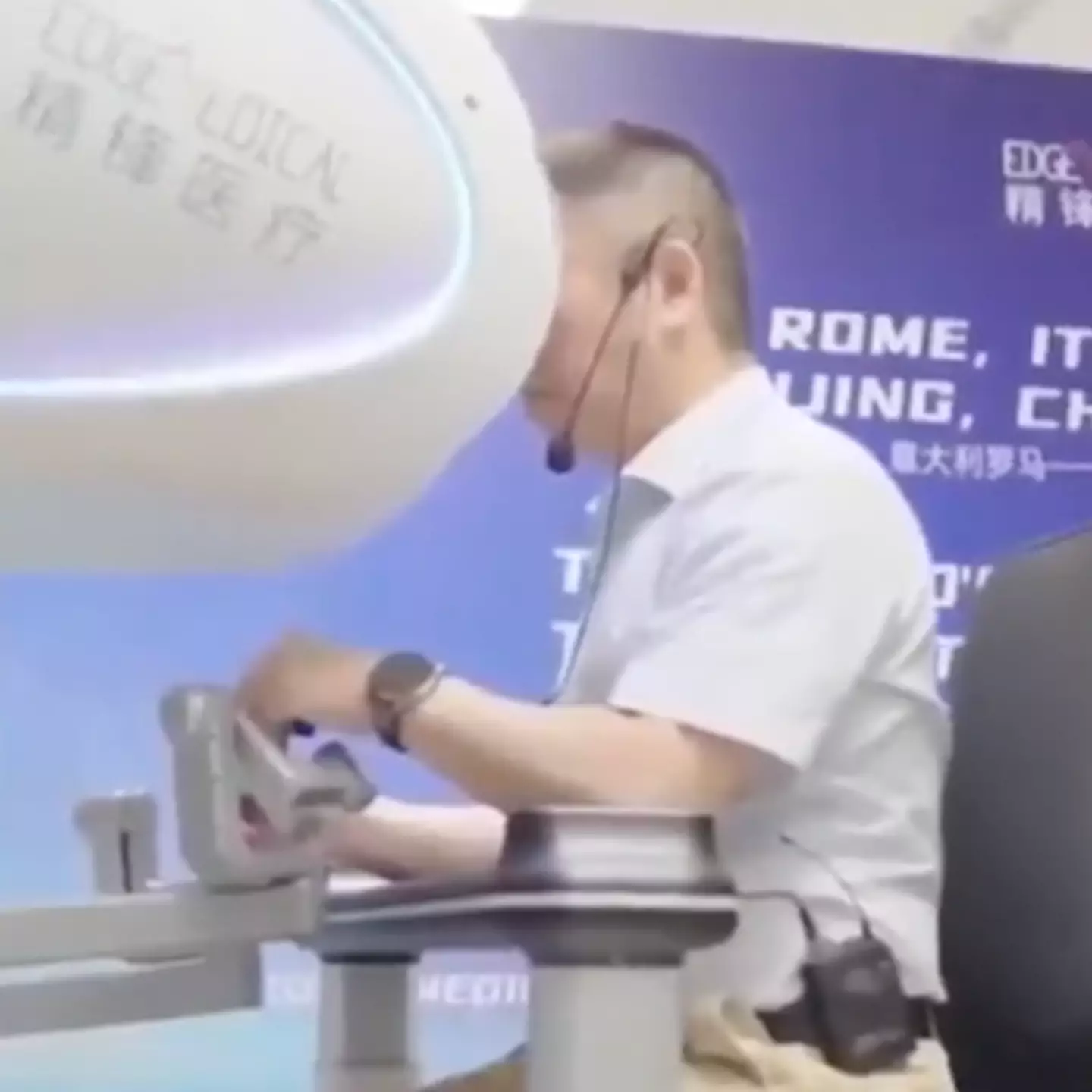
On June 10, 2024, medical history was made when Dr. Zhang Xu, a renowned urologist from the People’s Liberation Army General Hospital in Beijing, successfully performed a prostate cancer surgery on a patient 8,000 kilometers away in Rome, Italy. This groundbreaking telesurgery, conducted live during the Challenges in Laparoscopy and Robotics & AI conference, marked the world’s first remote robotic operation across such a vast distance. Powered by a 5G network and fiber-optic connections, the procedure achieved a latency of just 135 milliseconds—faster than the average human blink—demonstrating the seamless integration of human skill and cutting-edge technology. This achievement, led by Zhang and his team, not only showcased the potential of telesurgery but also hinted at a future where geographical borders may no longer limit access to world-class medical care. This article delves into the details of this historic operation, the technology that made it possible, its implications for global healthcare, and the transformative possibilities that lie ahead.
The Historic Operation: A Surgeon in Rome, a Patient in Beijing
The telesurgery took place in June 2024, with Dr. Zhang Xu stationed in Rome while the patient, undergoing a radical prostatectomy to remove cancerous tissue, remained at the Third Medical Center of the People’s Liberation Army General Hospital in Beijing. This distance of over 8,000 kilometers posed a significant challenge, as even minor delays in communication could jeopardize the precision required for such a delicate procedure. However, the operation proceeded flawlessly, thanks to a sophisticated setup that included a surgical console in Rome and a set of robotic arms in Beijing, connected via a high-speed 5G network and fiber-optic infrastructure.
The procedure was broadcast live during the conference, attended by global medical experts, including Vito Pansadoro, the event’s chairman and a specialist in robotic surgery. Pansadoro hailed the operation as a “historical milestone” in the fields of robotics and laparoscopy, underscoring its significance. Dr. Zhang controlled the robotic arms from a console that displayed real-time images of the patient, allowing him to detect movements and direct the instruments with precision. The robotic arms mimicked Zhang’s every gesture, performing the surgery as if he were physically present in the operating room. A backup surgical team in Beijing monitored the patient, ready to intervene if needed, ensuring safety throughout the process.
The latency, or delay, between Zhang’s movements in Rome and the robotic arms’ actions in Beijing was a mere 135 milliseconds—well below the 200-millisecond threshold recommended for telesurgery. This near-instantaneous response, made possible by 5G’s ultra-low latency and high bandwidth, allowed Zhang to operate with the same confidence as he would in a traditional setting. The success of the surgery, reported by Chinese state broadcaster CGTN Europe, confirmed the removal of the cancerous tissue, with the patient recovering uneventfully, marking a triumph for remote medical intervention.
The Technology Behind the Breakthrough: 5G and Robotics
The telesurgery’s success hinged on the convergence of two transformative technologies: 5G networks and robotic surgery systems. 5G, the fifth generation of wireless communication, offers speeds up to 100 times faster than 4G, with latencies as low as 1 millisecond under optimal conditions. In this case, the combination of 5G and fiber-optic connections reduced the latency to 135 milliseconds across an 8,000-kilometer distance, a feat detailed by uniladtech.com. This low latency is critical for telesurgery, where even a fraction of a second’s delay could disrupt the surgeon’s rhythm or endanger the patient.
The robotic system, developed by Zhang’s team at the PLA General Hospital, featured a console in Rome that transmitted Zhang’s hand movements to robotic arms in Beijing. These arms, equipped with high-definition cameras and precision instruments, replicated the surgeon’s actions with accuracy, as described by scmp.com. The system relied on real-time imaging, allowing Zhang to see the surgical field as if he were standing over the operating table. The 5G network’s high bandwidth ensured that these images were transmitted without lag, while its reliability prevented disruptions that could occur with less advanced networks.
China’s advanced telecommunications infrastructure played a pivotal role in this achievement. The country’s investment in 5G, with over 2 million base stations deployed by 2024, has created a robust network capable of supporting complex applications like telesurgery. Fiber-optic cables, which provide the backbone for high-speed data transfer, further enhanced the connection between Rome and Beijing. Zhang noted in a CCTV report that communication delays are the biggest challenge in remote surgery, but the 135-millisecond latency proved “almost as seamless as performing surgery in person,”.
The robotic arms themselves are a product of years of research into minimally invasive surgery. These systems, which use small incisions and precise movements, reduce patient trauma and recovery time compared to traditional open surgery. The integration of 5G has elevated this technology, enabling surgeons to operate remotely without compromising precision—a development that could revolutionize healthcare delivery worldwide.
Implications for Global Healthcare: Breaking Down Borders
The successful telesurgery performed by Dr. Zhang Xu has profound implications for global healthcare, particularly in regions where access to specialized medical expertise is limited. Traditionally, patients in remote or underserved areas must travel long distances—or forgo treatment altogether—due to the scarcity of skilled surgeons. Telesurgery offers a solution, allowing top specialists to operate on patients anywhere with the right infrastructure, effectively breaking down geographical barriers.
For China, this achievement reinforces its position as a leader in medical innovation. The country has invested heavily in 5G and robotics, with the PLA General Hospital at the forefront of telesurgery research. Zhang’s team demonstrated that these technologies can be applied practically, paving the way for future operations that could benefit patients across China’s vast rural regions. With a population of over 1.4 billion, including millions in remote areas, China stands to gain significantly from telesurgery, reducing the burden on its healthcare system and improving outcomes for cancer patients, who require timely and precise interventions.
Globally, the implications are even broader. Countries with limited medical resources, such as those in Africa or Southeast Asia, could leverage telesurgery to connect with specialists in Europe, North America, or Asia. For example, a patient in rural Kenya could be operated on by a neurosurgeon in London, provided the necessary 5G and robotic infrastructure is in place. This could democratize access to healthcare, ensuring that even the most complex procedures are available to populations previously excluded due to location or cost.
The economic impact is also significant. Telesurgery could reduce the need for patients to travel for treatment, lowering healthcare costs and boosting local economies. Hospitals could invest in robotic systems rather than maintaining large surgical teams, optimizing resources in an era of rising healthcare expenses. Furthermore, the technology could attract medical tourism to countries like China, where cutting-edge procedures are performed, enhancing their global reputation.
Societal and Ethical Considerations: A New Frontier
While the potential of telesurgery is immense, it also raises societal and ethical questions that must be addressed. One concern is the digital divide—regions without 5G coverage or advanced medical facilities may be left behind, exacerbating existing healthcare inequalities. The success of Zhang’s operation relied on China’s sophisticated infrastructure, which is not yet replicated globally. Bridging this gap will require international cooperation to expand 5G networks and robotic systems to developing countries.
Another consideration is the role of human surgeons. Telesurgery shifts the physical presence of the surgeon to a remote location, raising questions about accountability and oversight. In Zhang’s case, a backup team in Beijing monitored the patient, ensuring safety, but future operations may require standardized protocols to address potential technical failures or ethical dilemmas. For instance, who is liable if a delay or malfunction occurs during a remote procedure?
Privacy is another critical issue. The transmission of real-time surgical images across continents involves sensitive patient data, necessitating robust cybersecurity measures to prevent breaches. China’s strict data protection laws, combined with international regulations like the EU’s General Data Protection Regulation (GDPR), will shape how telesurgery is implemented globally.
Despite these challenges, the societal benefits are clear. Telesurgery could improve access to care for aging populations, a growing concern in countries like Japan, where 38% of the population is projected to be over 65 by 2035, according to the IFR. It could also support disaster response, allowing surgeons to operate on victims in hard-to-reach areas, as seen in the potential applications of robotic systems like those used by Zhang’s team.
The Future of Medicine: Beyond Borders
The telesurgery performed by Dr. Zhang Xu is a harbinger of a future where medicine transcends geographical limitations. As 5G networks expand and robotic technology advances, telesurgery could become a standard practice, enabling specialists to operate on patients worldwide. Zhang himself emphasized this potential, stating to scmp.com that “telesurgery is one of the most important development directions in the future of surgery,” a vision supported by ongoing research.
Future developments may include fully autonomous robotic systems, where AI assists or even performs surgeries based on pre-programmed protocols and real-time data. Sciencedirect.com notes that telesurgery systems have been in development for two decades, with recent improvements driven by 5G and high-speed networks. The incorporation of AI could enhance precision, reduce human error, and allow for 24/7 surgical capabilities, particularly in emergencies.
The technology could also extend beyond surgery to other medical fields. Tele-diagnostics, where doctors remotely assess patients using AI-powered imaging, and tele-rehabilitation, where physical therapists guide recovery via robotic devices, are natural extensions of telesurgery. In rural China, where healthcare access is uneven, these innovations could transform primary care, connecting patients with specialists without the need for travel.
Infrastructure remains a key challenge. Expanding 5G to remote areas will require significant investment, estimated at billions of dollars globally. Partnerships between governments, telecom companies, and medical institutions will be essential to deploy the necessary networks and robotic systems. China’s success with the Rome-Beijing operation provides a model, but scalability will depend on international collaboration and funding.
Conclusion: A Milestone for Humanity
The telesurgery performed by Dr. Zhang Xu on June 10, 2024, stands as a milestone in medical history, proving that a surgeon can operate 8,000 kilometers away with precision and success. Powered by a 5G network and robotic arms with a latency of just 135 milliseconds, this world-first procedure demonstrated the seamless fusion of human expertise and technological innovation. Led by Zhang and his team at the PLA General Hospital, the operation not only removed cancerous tissue from a patient in Beijing but also opened a new chapter in healthcare delivery.
The implications are profound, offering hope for improved access to specialized care, reduced healthcare costs, and enhanced disaster response capabilities. Yet, challenges like the digital divide, ethical considerations, and infrastructure development must be addressed to realize this vision. As 5G and robotics continue to evolve, the future of medicine may indeed become borderless, with patients worldwide benefiting from the skills of the best surgeons, regardless of distance.
This historic achievement is a testament to human ingenuity, showcasing what is possible when technology bridges continents. As Dr. Zhang’s team has proven, the future of medicine is already here—and it promises to transform lives on a global scale.


